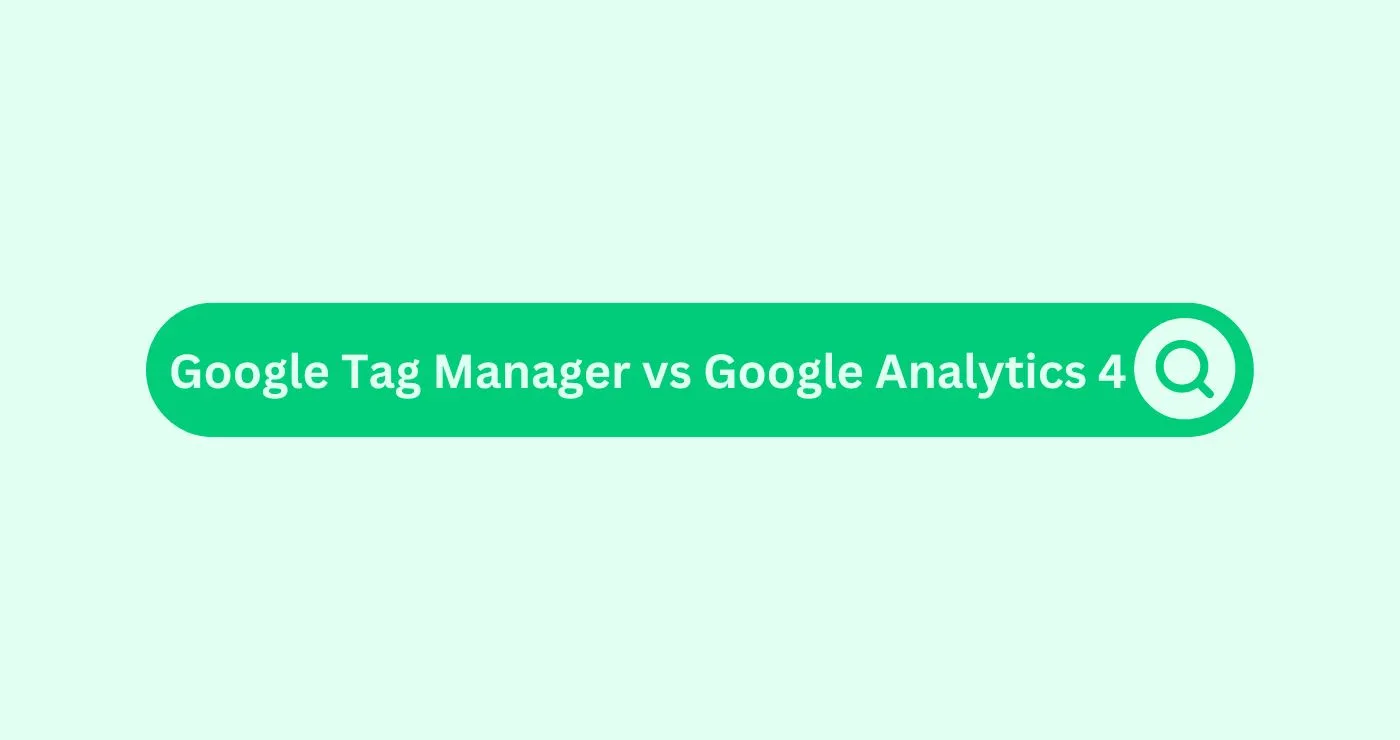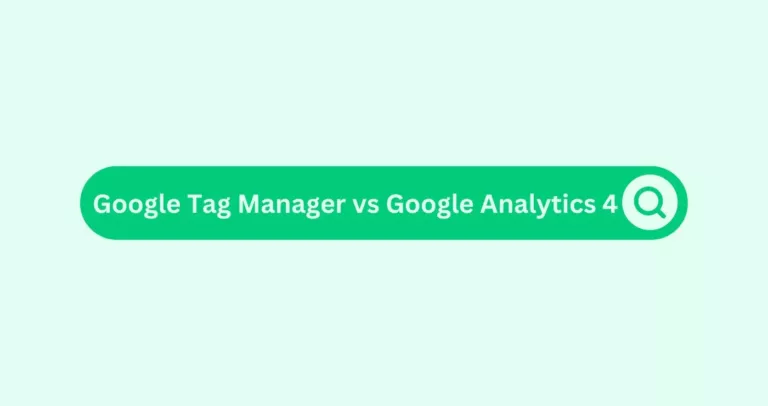Over the past decade, there have been many interesting developments in measurement and analytics, leading to new tools being created and existing ones getting better. Google Analytics 4, which comes after Universal Analytics (UA), is a tool used by small to large businesses that are digitally active, so there is always new information to understand.
Google Tag Manager is a free tool that helps manage marketing tags on websites without changing the website’s code. It makes it easier to monitor what users do and gather data for Google Analytics and similar services. GA4 is commonly used together with Google Tag Manager. If you use other tools like Google Search Console, Google Ads, and Google Looker Studio, it can be hard to distinguish them from each other.
In this blog post, we are going to look at the differences and purposes of Google Tag Manager and Google Analytics 4 to help people know what each one is used for.
What is Google Analytics 4 or GA4?
Google Analytics 4 comes after Universal Analytics, which was Google’s tool for analysing website data. It operated for 12 years and shut down on July 1st, 2023. (July 2024 for 360 customers)
This tool gathers information about what users do and how they engage, i.e., the actions people take on your site or application. It also gives various summaries to gauge how well your website or app works, plus marketing details if other instruments are sharing data with GA4.
GA4 is Google’s fourth version of this popular tool for web analytics. It seeks to meet the needs of the changing digital marketing landscape and address concerns about user privacy.
Google Analytics 4 (GA4) has introduced several new features that aim to improve its performance:
- Event-based tracking: Instead of tracking user sessions, GA4 focuses on tracking user actions, giving a clearer view of user engagement.
- Unified web + app data: GA4 gathers data from websites and apps together, helping understand the complete user journey.
- Debugging: GA4’s DebugView makes it easier to check data in real-time, ensuring accurate tracking.
- Privacy controls: GA4 enhances user privacy by allowing data retention settings, data deletion, and automatic IP anonymisation.
- Improved integration: Better integration with Google Ads and BigQuery, enabling advanced data analysis.
- Cross-domain tracking: Tracking users across different domains is simpler with GA4.
- Enhanced measurement: GA4 offers new events for tracking core user interactions.
- Explorations: Custom report building in GA4 for more flexible and detailed analysis.
These features in GA4 aim to improve tracking, privacy, and reporting for digital marketing efforts.
What is Google Tag Manager or GTM?
Google Tag Manager (GTM) is a tag management system that simplifies adding tracking codes for tools like GA4 without directly altering website code. It centralises tracking, making implementation easier compared to manually coding various events on the website. GTM, like GA4, is free and widely used, offering a user-friendly way to manage tracking for analytics tools, ad platforms, and custom codes.
The installation of GTM involves adding a code snippet to the website, enabling users to easily incorporate tracking for various platforms and customise tracking as needed. Tag management tools like GTM reduce reliance on developers, making it beneficial for businesses with limited resources to set up essential tracking for marketing campaigns.
GTM utilises the data layer to set up tracking and transmit data to tools like GA4, serving as an intermediary between the website and tracking platforms. While scraping data from websites is an alternative when the data layer is unavailable, it is less reliable compared to using the data layer for tracking purposes.
GA4 vs GTM
Google Tag Manager (GTM) and Google Analytics (GA4) serve different purposes and have distinct functionalities:
| Topic | GTM | GA4 |
| Data Collection | GTM tracks and collects data but does not store it, acting as a medium to send data to GA4. | GA4 can collect and store data for robust reporting. |
| Reporting | GTM does not provide any reporting functionality. | GA4 offers comprehensive reporting capabilities for analysis. |
| Integration | GTM allows tracking events for various platforms and manages them in one place. | GA4 tracking through GTAG is specific to GA4 events. |
| Events | GTM tracks events by creating tags and triggers for event collection. | GA4 requires specific code patterns to be placed on the website for tracking events. |
| Conversions | GTM sends events to GA4 but doesn’t identify them as conversions. | Where you define conversions (e.g., purchases, signups). GTM simply sends the event data, and GA4 interprets it based on your conversion settings. |
| Users | GA4 caters to a wider audience, including marketers and managers seeking insights. | GTM is typically used by specialists for technical aspects. |
Using GTM and GA4 together is recommended as they complement each other, streamlining tracking and reporting processes. While GA4 can be used without GTM, combining them simplifies implementation and tag management, reducing reliance on developers for changes.
Leveraging both tools for their intended purposes enhances tracking efficiency, streamlines reporting, and prevents data duplication, ensuring accurate and reliable insights for effective decision-making.
Summary
Google Tag Manager (GTM) and Google Analytics 4 (GA4) are two different tools used in digital marketing. Here’s a simple summary:
Google Tag Manager (GTM) is a tool that helps you add tracking codes from other platforms like Google Analytics 4, Google Ads, and more. It makes it easier to manage these codes and make changes without needing to involve developers.
Google Analytics 4 (GA4) is a tool that collects data about how people use websites and apps. It provides reports and insights to help you understand how well your marketing efforts are working.
Both tools are designed to work together. GA4 collects data, and GTM helps you manage and send that data to GA4. Using them together makes it easier to track and analyse your marketing efforts.
If you’re new to digital marketing, you might find it confusing to choose between GA4 and GTM. The best approach is to use both tools together, as they complement each other. This way, you can get the most out of your data and make informed decisions for your marketing campaigns.
For more information about GA4, you can check out our beginner’s tutorial to get started.











